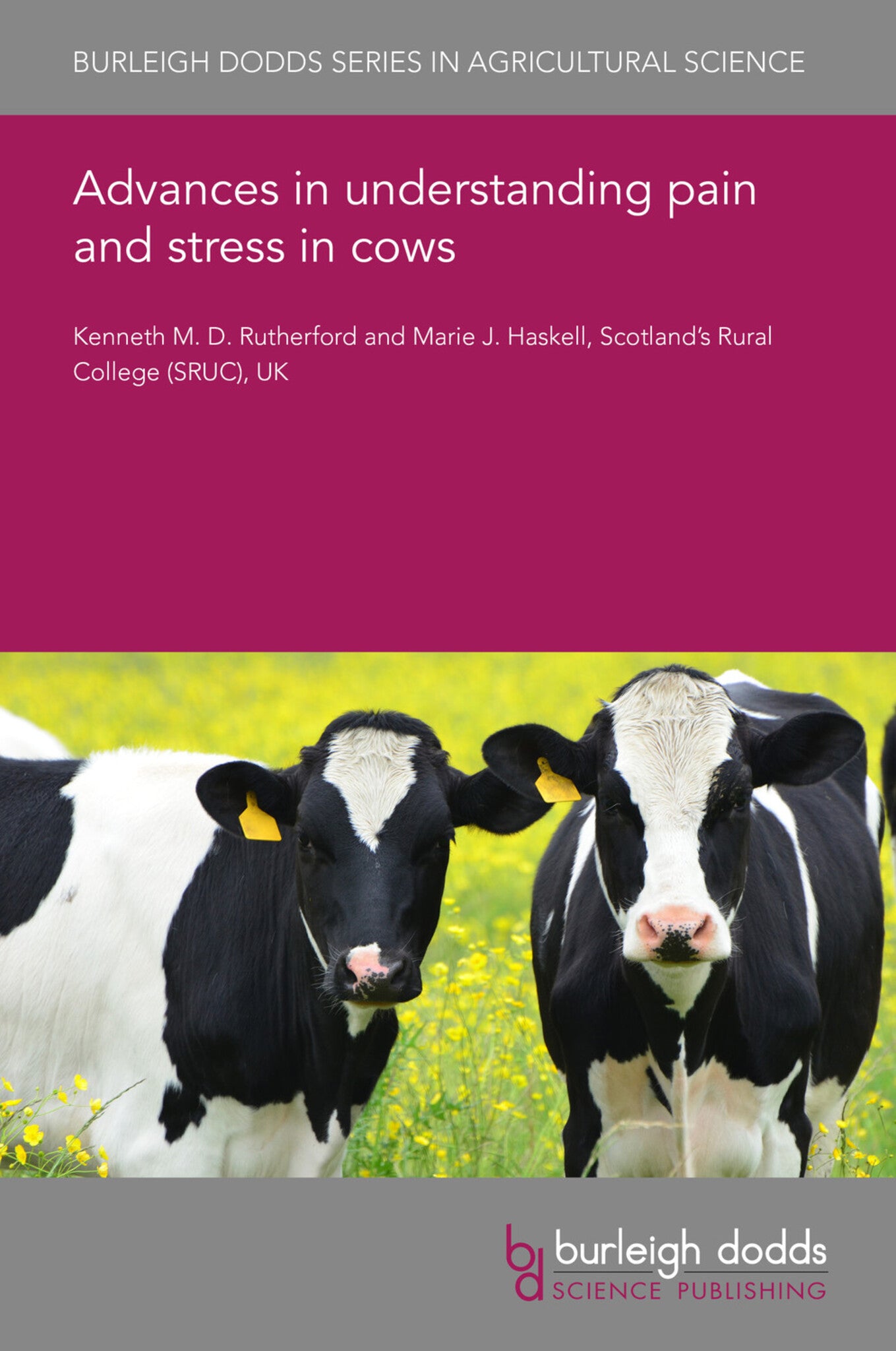We're sorry. An error has occurred
Please cancel or retry.
Advances in understanding pain and stress in cows
Regular price
£25.00
Sale price
£25.00
Regular price
£0.00
Unit price
/
per
Sale
Sold out
Re-stocking soon
This chapter provides definitions of pain and stress, particularly focusing on the issue that 'stress' as a stand-alone generic term may not be helpful in terms of advancing our understanding of th...
Read More

Some error occured while loading the Quick View. Please close the Quick View and try reloading the page.
Couldn't load pickup availability
- Format:
-
22 February 2021

This chapter provides definitions of pain and stress, particularly focusing on the issue that 'stress' as a stand-alone generic term may not be helpful in terms of advancing our understanding of the impact of animal management on animal welfare. For cattle, as for other animals managed by humans, it is necessary to consider the source of 'stress' and to consider the general and specific animal responses to different contexts and events. It outlines the standard methods of assessing pain and stress, then presents a number of new methods that are being used to assess the experiential aspects, explains their theoretical background and how they allow us to gain a better understanding of the experience of pain and stress in cattle than previous methods with respect to the major sources of pain and stress. Finally, the chapter provides a case study describing a situation where these approaches have led to clear recent improvements in practice that are having real benefits for animals under commercial management.

Price: £25.00
Publisher: Burleigh Dodds Science Publishing
Imprint: Burleigh Dodds Science Publishing
Series: Burleigh Dodds Series in Agricultural Science
Publication Date:
22 February 2021
ISBN: 9781801460903
Format: eBook
BISACs:
TECHNOLOGY & ENGINEERING / Agriculture / Animal Husbandry, Dairy farming, TECHNOLOGY & ENGINEERING / Agriculture / Sustainable Agriculture, Sustainable agriculture, Agricultural science

1 Introduction 2 Definitions of pain and stress 3 Foundation methods and the need for new approaches 4 Sources of pain and stress and foundation measures 5 New methods and examples 6 Future research 7 Case study: disbudding in calves 8 Summary 9 Where to look for further information 10 References



